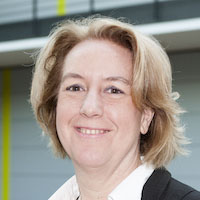SaxoCell – 2nd Phase
Title: SaxoCell 2nd Phase
Duration: 01.10.2024 – 30.09.2027
Research Area: Life Science and Medicine
ScaDS.AI contributes to two subprojects in the second Phase of the BMBF cluster4future SaxoCell which is a large and saxon-wide research cluster dedicated to the development and clinical application of cell-based therapies. Our teams are active in the subprojects NK-Alliance and MSC-Ready.
NK-Alliance is a project and interdisciplinary consortium for the development and optimization of cell therapies employing natural-killer (NK) cells. NK-cell-based therapies have a broad range of applications and significantly improve therapy of cancer patients and autoimmune diseases. In particular, the project focuses on the treatment of glioblastoms, leukemia and autoimmune diseases caused by B cells.
In the project MSC-Ready another cell type is the focus: mesenchymal stromal cells (MSC). These cells are stem-cells, which are isolated from umbilical cord blood, and serve as precursors for a wide range of cell therapies including the treatment of sepsis or chronic lung diseases of infants. The goal of the project is to increase production efficiency to increase cell therapy availability and lower costs of the mostly non-automated production process.
Aims
In both projects ScaDS.AI partners develop and apply AI and data science methods to enable the design of new cell therapies as well as in optimizing its production. In more detail, we use AI methods to assist protein design of binding domains (NK-Alliance, Meiler/Schoeder), deep NK cell characterization and cytotoxicity prediction (NK-Alliance, Köhl/Reiche/Rahm/Ewald) and process optimization in cell manufacturing (MSC-Ready, Rahm/Ewald/Neumuth). Lastly, by working with regional industry partners like MDTB cells GmBH, we contribute to the aim of enabling and fostering cell therapeutics “made in Saxony”.
Problem
In the second phase of SaxoCell we continue to work on the development and optimization of gene and cell therapeutics, also called “living drugs”, which are currently of high cost and low availability. While providing immense potential to treat many kind of diseases, cell therapeutics in clinical routine face problems like off-target toxicity, lack of markers for donor selection or mostly manual manufacturing. These problems cause high costs and very limited use and we develop AI-based methods together with data analysis to overcome key challenges towards a wide-spread application of cell-based therapies.
Practical Example
The SaxoCell projects try to achieve development and optimization by a wide range of data ranging from molecular genetic at single-cell resolution to microscopic live-cell imaging during manufacturing. For the latter we continue the work of the first phase where we develop AI-based image analysis to monitor cell cultivation to foster process optimization, quality control and automation. In detail we use fine-trained a foundation model of image segmentation, Segment Anything by Meta, to enable automated and robust quantification of cell density (confluence). Monitoring of confluence is crucial of stem cell cultivation as raw material is scarce (umbilical cord blood) and at high confluence stem cells start to differentiate and lose potency for cell therapeutics.

Technology
We will analyze and employ AI-methods on many different data modalities. Hence, we will use different techniques and approaches in each subproject. To optimize production of cell therapeutics, we will continue the research on foundation models for live-cell imaging in combination with other sensor data of a real-world production demonstrator (MSC-Ready). In NK-Alliance we will construct a deep cell characterization by integrating single-cell gene expression data with donor specificity by unsupervised learning methods like autoencoders as well as supervised learning to train models and identify markers for donor selection. Lastly, cutting-edge structure prediction methods will be employed in NK-alliance by the group of Schoeder/Meiler to design binding domains of NK-cells for efficient cell therapeutics.
Outlook
Overall SaxoCell aims to foster a cost-effective development and production of cell therapeutics in the region “made in Saxony”. We, as AI and data analyst partners, support with our expertise to gain insights, ensure quality and optimize production. Further, based on real-world problems and data, we will develop new approaches and methods, which can be applied to other scenarios and research in other domains.
Team
Lead

Dr. Jan Ewald
Leipzig University

Prof. Dr. Ulrike Köhl
Leipzig University
Chair of Immune Oncology

Prof. Dr. Jens Meiler
Leipzig University
Institute for Drug Discovery

Prof. Dr. Thomas Neumuth
HTWK Leipzig
Chair of Information Systems in Medical Technology

Prof. Dr. Erhard Rahm
Leipzig University
Department of Computer Science, Database Group, Chair of Databases

Dr. rer. nat. Kristin Reiche
Fraunhofer Institute for Cell Therapy and Immunology
Bioinformatics

Jun.-Prof. Clara T. Schoeder
Leipzig University
Drug Discovery
Team Members
N.N.
Partners
Academia:
- Prof. Mario Rüdiger, Prof. Achim Temme, Dr. Jiri Eitler and Prof. Marius Ader (TU Dresden)
- Dr. Dominik Schmiedel and Dr. Anna Dünkel (Fraunhofer IZI)
- Prof. Ulrich Hacker and Prof. Dr. Marco Herling (Uniklinik Leipzig)
Industry:
- ecSeq GmbH
- MDTB Cells GmbH
- DKMS Stem Cell Bank gGmbH
- BioThrust GmbH
- Cell.Copedia GmbH
- DRK Baden-Württemberg-Hessen gGmbH
- Miltenyi Biotec B.V. & Co.KG
- ProBioGen AG
- QuoData GmbH
- Wacker Chemie AG


